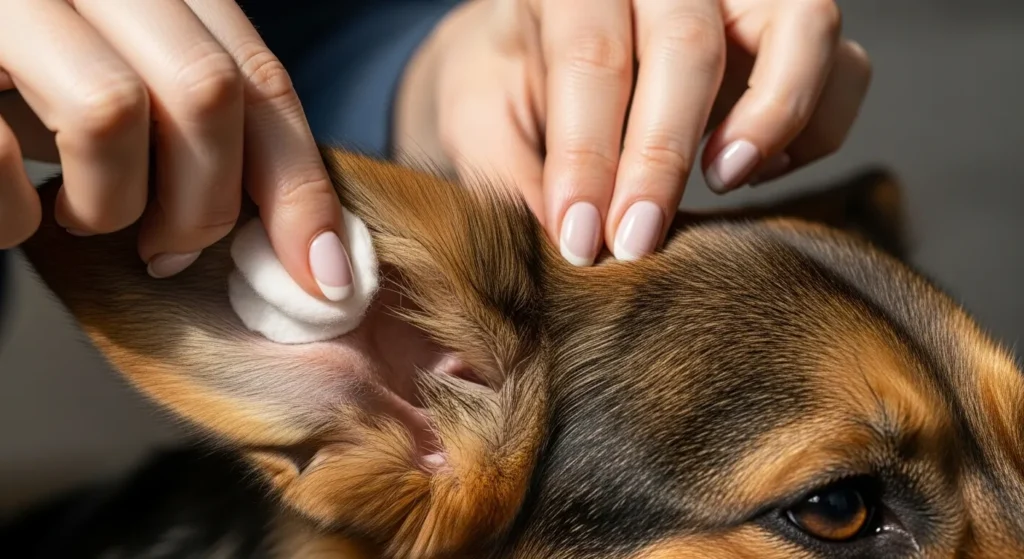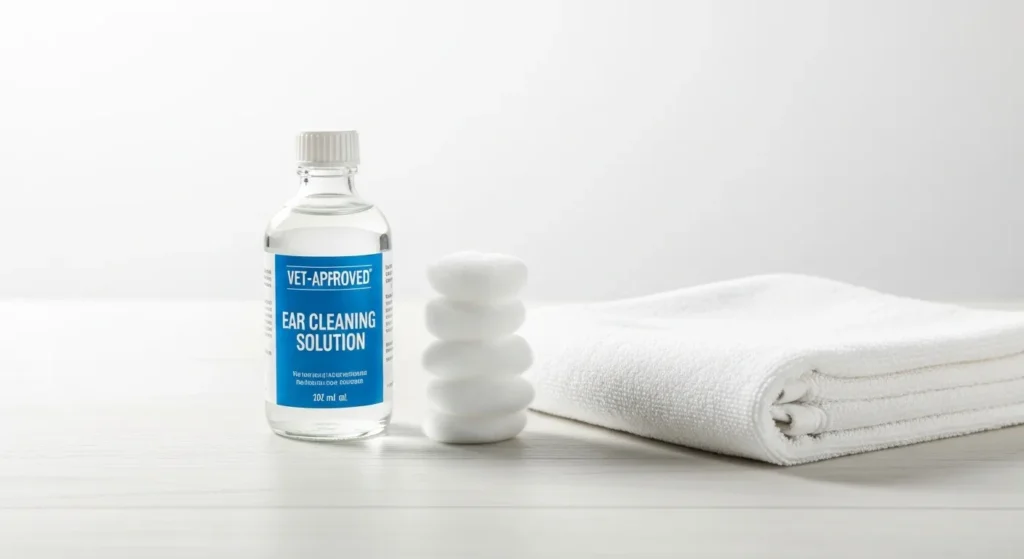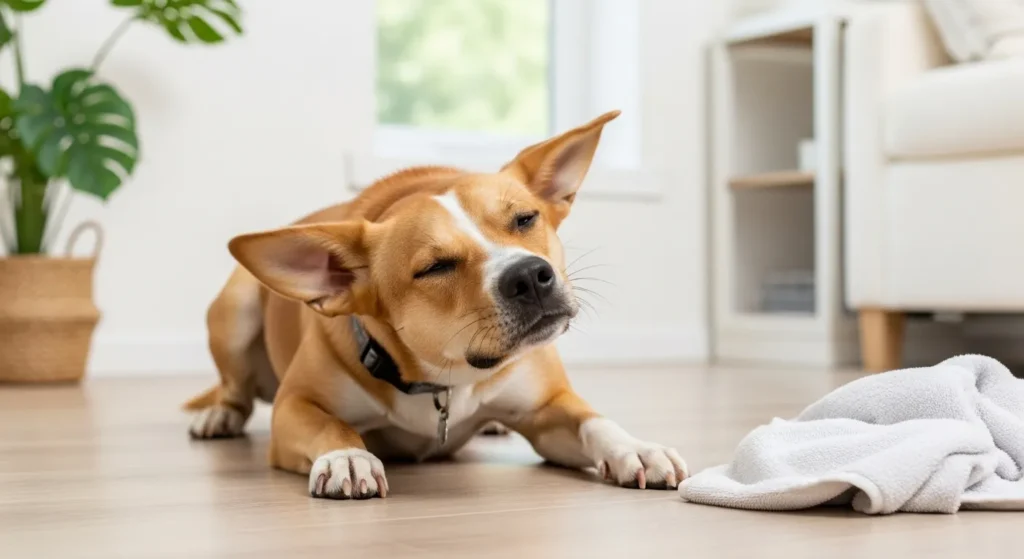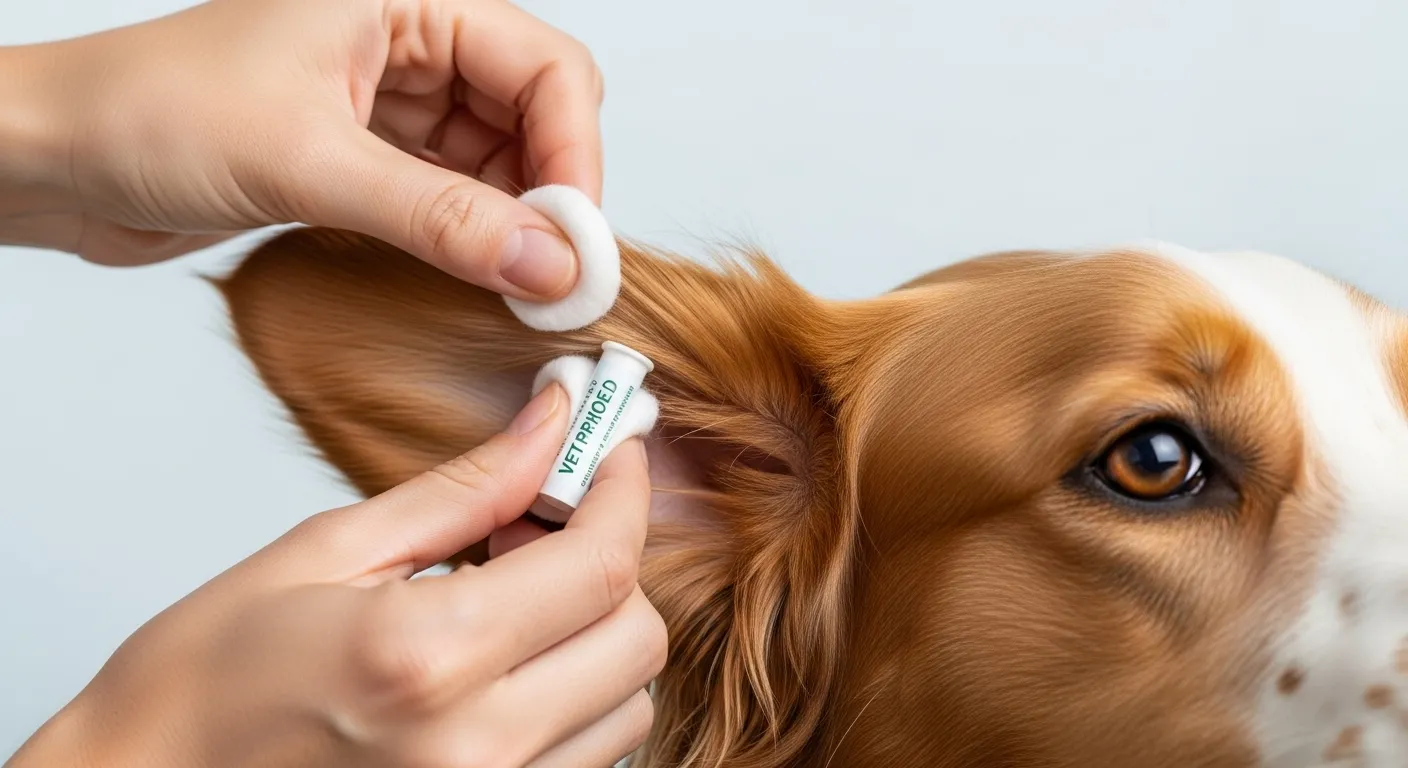Cleaning your dog’s ears is a key part of their grooming routine. It helps prevent painful ear infections and keeps your pet comfortable. This guide explains when and how to clean your dog’s ears safely at home. Follow these steps to ensure your dog’s ears stay healthy.
Why Cleaning Your Dog’s Ears Matters
Dog ear infections are common, especially in breeds with floppy ears like Cocker Spaniels or Basset Hounds. The L-shaped ear canal traps debris, wax, and moisture, which can lead to infections. Regular cleaning removes these and supports ear health. It also lets you check for signs of problems early.
- Prevents infections: Removes wax, debris, and bacteria.
- Improves comfort: Keeps ears clean and itch-free.
- Early detection: Helps spot redness, odor, or discharge.

When Should You Clean Your Dog’s Ears?
Not all dogs need frequent ear cleaning. Some dogs, like those with healthy ears, may rarely need it. Others, like dogs who swim or have floppy ears, need it more often. Check your dog’s ears weekly for these signs:
- Wax buildup or dirt.
- Mild odor (not strong or yeasty).
- Head shaking or scratching.
If you notice redness, swelling, pain, or a strong smell, stop and contact your vet. These could indicate an infection or ear mites. Always consult your vet before cleaning if you suspect a problem. For help spotting issues, try our Pet Symptom Checker.
Supplies You’ll Need
Gather these items before starting:
- Vet-approved ear cleaning solution: Avoid alcohol, hydrogen peroxide, or human products.
- Cotton balls or gauze: Never use cotton swabs (Q-tips), as they can push debris deeper or damage the ear.
- Clean towel: To catch any mess.
- Treats: To reward your dog and make it a positive experience.

Step-by-Step Guide to Cleaning Your Dog’s Ears
Follow these steps to clean your dog’s ears safely:
- Check the ears: Look for redness, swelling, or bad odor. If present, contact your vet instead of cleaning. Learn more about ear issues with our Pet Symptom Checker.
- Calm your dog: Choose a quiet time when your dog is relaxed. Pet them gently to ease any nervousness.
- Position your dog: For small dogs, place them on a table or your lap. For larger dogs, have them sit with their back against a wall. Hold gently to keep them still.
- Lift the ear flap: Gently pull the ear flap up to straighten the ear canal.
- Apply cleaner: Squeeze enough vet-approved ear cleaning solution to fill the ear canal. Avoid touching the bottle tip to the ear to prevent bacteria spread.
- Massage the ear: Gently massage the base of the ear for 20-30 seconds. You may hear a squishing sound as the cleaner loosens debris.
- Let your dog shake: Allow your dog to shake their head to remove excess solution and debris. Have a towel ready for any mess.
- Wipe the ear: Use a cotton ball or gauze to wipe away debris from the outer ear and canal. Only go as deep as your finger can comfortably reach (about one knuckle).
- Dry the ear: Use a fresh cotton ball to absorb any remaining solution. Fold back the ear flap to let it air dry for a few minutes.
- Reward your dog: Give treats and praise to make the experience positive.
Repeat for the other ear. If your dog seems stressed, go slowly or stop and try again later.

How Often Should You Clean Your Dog’s Ears?
The frequency depends on your dog’s needs:
- Healthy ears: Clean only when you notice wax or dirt, often every 1-2 months.
- Floppy-eared breeds: Clean every 1-2 weeks to prevent buildup.
- Swimmers: Clean after swimming to remove moisture.
- Dogs with allergies or infections: Follow your vet’s advice, which may include daily cleaning during treatment.
Over-cleaning can irritate the ear canal, so don’t clean unless needed. Your vet can recommend a schedule based on your dog’s breed and lifestyle. For breed-specific advice, try our Pet Breed Finder Quiz.
Common Mistakes to Avoid
Avoid these errors to keep your dog safe:
- Using cotton swabs: They can damage the ear or push debris deeper.
- Using harsh cleaners: Alcohol, hydrogen peroxide, or vinegar can irritate the ear.
- Cleaning infected ears: Always check with a vet first if you suspect an infection.
- Going too deep: Only clean as far as your finger can reach.
- Forcing your dog: Stop if your dog is stressed to avoid injury.
For more pet care tips, check out our guide on how to groom your dog at home.
Signs Your Dog Needs a Vet
Stop cleaning and contact your vet if you notice:
- Redness or swelling.
- Strong, yeasty, or bad odor.
- Pain or sensitivity when touching the ear.
- Discharge, pus, or blood.
- Excessive head shaking or scratching.
These could indicate ear infections, ear mites, or allergies. Use our Pet Symptom Checker to identify potential issues. For more on pet health, read our post on can dogs get lice.
People Also Ask: Common Questions Answered
Here are answers to common questions from Google’s “People Also Ask” section:
- Can I use water to clean my dog’s ears? No, water can leave moisture in the ear, leading to infections. Use a vet-approved ear cleaner.
- How do I know if my dog has ear mites? Look for intense scratching, dark debris, or a coffee-ground-like discharge. Contact your vet for treatment.
- Can I use homemade solutions? Avoid homemade remedies like vinegar or olive oil unless advised by a vet, as they may irritate the ear.
- How do I clean a dog’s ears that won’t stay still? Use treats, go slowly, or have someone help hold your dog. If it’s too difficult, ask your vet or a groomer for help.
Additional Tips for Healthy Dog Ears
- Trim ear hair: For hairy breeds, gently trim excess hair around the ear canal with blunt scissors to improve airflow. Learn more in our dog grooming guide.
- Dry ears after baths or swimming: Use a towel or ear-drying powder to remove moisture.
- Check regularly: Inspect ears weekly to catch issues early.
- Use positive reinforcement: Make ear cleaning a pleasant experience with treats and praise.
For more pet care advice, explore our Petfel blog or use our Pet Age Calculator to understand your dog’s needs at every life stage.
External Resources for More Information
- American Kennel Club: How to Clean a Dog’s Ears
- Cornell University College of Veterinary Medicine: Ear Cleaning Guide
- VCA Animal Hospitals: Ear Cleaning and Medication
By following this guide, you can keep your dog’s ears clean and healthy. Regular care prevents discomfort and costly vet visits. Always consult your vet if you’re unsure or notice signs of trouble.
